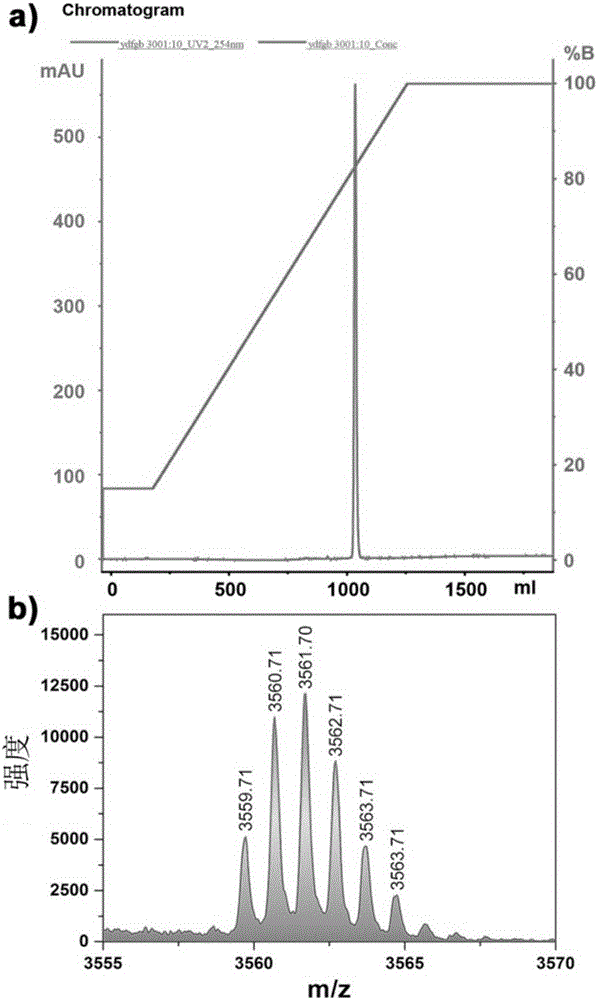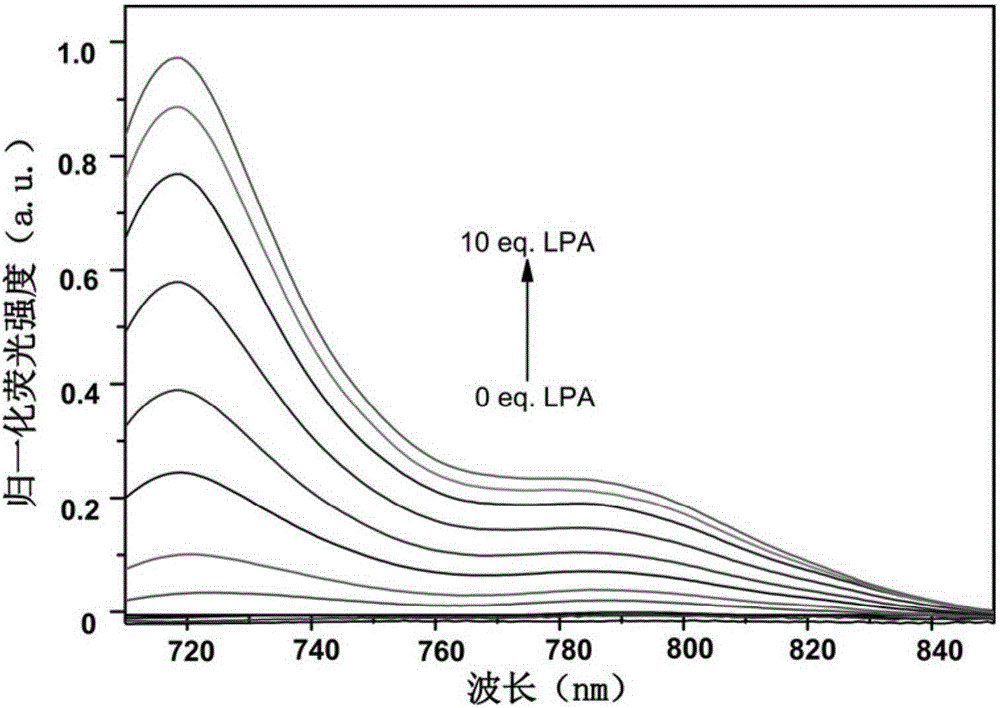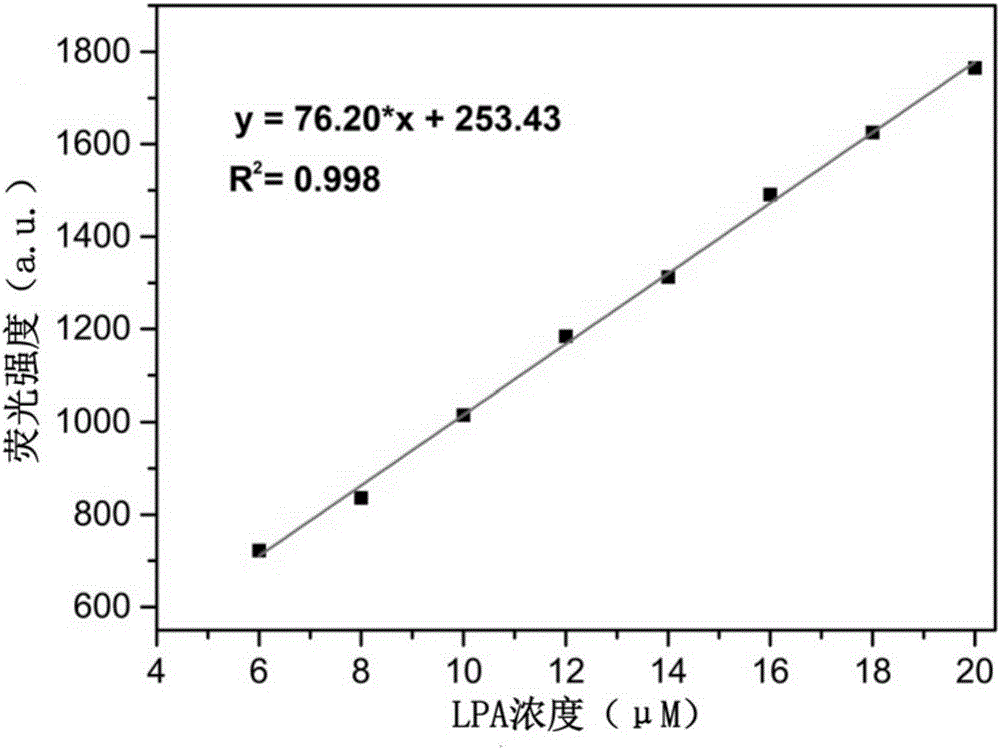Polypeptide probe for specific identification of lysophosphatidic acid, preparation and applications thereof
A lysophosphatidic acid, specific technology, applied in the directions of preparations, peptides, fluorescence/phosphorescence, etc. for in vivo tests, can solve problems such as difficulty in meeting early diagnosis
- Summary
- Abstract
- Description
- Claims
- Application Information
AI Technical Summary
Problems solved by technology
Method used
Image
Examples
preparation Embodiment 1
[0084] The preparation of the polypeptide probe 1 specifically recognizing LPA comprises the following steps:
[0085] (1) Put Rink amide resin (309mg, 0.810mmol / g, 0.25mmol, 1equiv.) and Fmoc-Lys(Fmoc)-OH (0.75mmol, 3.0equiv) in the reaction flask, add organic base (2.5mmol, 10equiv) and a condensing agent (0.75mmol, 3.0equiv), in DMF solution, reacted at room temperature for 3 hours, then removed the Fmoc protecting group to obtain a resin coupled with lysine;
[0086] (2) Repeat step (1) successively, wherein the raw amino acid is replaced by Fmoc arginine (1.5mmol, 6.0equiv), Fmoc glycine (1.5mmol, 6.0equiv), Fmoc aspartic acid ( 1.5mmol, 6.0equiv), Fmoc lysine (1.5mmol, 6.0equiv), and finally obtain a resin sequentially coupled with the above amino acids;
[0087] (3) Resin and Fmoc-Aeg-G (Boc) that step (2) is sequentially coupled with the above-mentioned amino acid 2 -OH (1.5mmol, 6.0equiv) was placed in a reaction flask, an organic base (5.0mmo, 10equiv) and a conden...
PUM
| Property | Measurement | Unit |
|---|---|---|
| Diameter | aaaaa | aaaaa |
Abstract
Description
Claims
Application Information
 Login to View More
Login to View More - R&D
- Intellectual Property
- Life Sciences
- Materials
- Tech Scout
- Unparalleled Data Quality
- Higher Quality Content
- 60% Fewer Hallucinations
Browse by: Latest US Patents, China's latest patents, Technical Efficacy Thesaurus, Application Domain, Technology Topic, Popular Technical Reports.
© 2025 PatSnap. All rights reserved.Legal|Privacy policy|Modern Slavery Act Transparency Statement|Sitemap|About US| Contact US: help@patsnap.com



